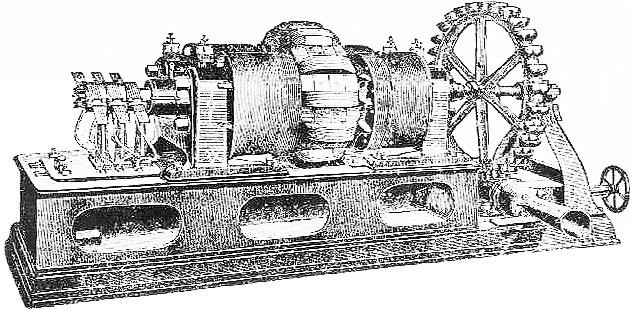#157 Pelton Waterwheel Collection
1880
Collection on the origins of the Pelton turbine and its principle of the "splitter" bucket
The simplicity of installation and operation of the Pelton wheel design led to its translation and use spread over the world. Many inventors and hydraulic engineers pursued water turbine designs in the mid-19th century, but the splitter principle (US Patent 223,692, October 26, 1880) appears original to Lester A. Pelton (1831-1908). It was developed when water was an under-used resource and before electricity was economically practical as a motive power.
Pelton built the first Pelton turbine in Camptonville in 1878. He soon moved his tests, then his family, to nearby Nevada City where he perfected the wheel at the foundry. He next went of San Francisco, where with the help of A. P. Brayton, he founded the Pelton Water Wheel Company in 1888. Pelton died in Oakland on March 14, 1908, and was buried in Vermilion, Ohio.
The Pelton wheel uses the momentum of a water jet impinging on buckets attached to the periphery of a wheel to produce power. It is a development of the primitive, so-called "hurdy gurdy" wheel used in the California gold fields in the 19th century. Various inventors have contributed to this type of water turbine, and subsequent important contributions to Pelton-wheel technology were made by William A. Doble, a San Francisco engineer who patented improvements in bucket forms and nozzle designs beginning February 7, 1899. Doble became chief engineer of Pelton's company in 1912, and his patents represent a second stage in the development of Pelton turbines.
This collection illustrates the origins and development of the Pelton waterwheel. It consists of many wheels, buckets, and items built by Pelton or the company he founded, including artifacts that date from 1878. Most notable is the 2-foot demonstration wheel. The mining museum, which houses the collection, is at the site of the Old North Star Power Plant, where Pelton wheels supplied compressed air to pumps and hoisting engines at mine shafts. The last of the Pelton-type wheels in Grass Valley were retired shortly after the 1930s, since they were no longer economically practical compared to diesel power in the 1950s. The North Star Mining Company closed in 1956. The Museum is operated by the Nevada County Historical Society.
Copyright authorization is limited to the promotion of the ASME landmarks program, in most cases, and therefore permission to use this image is restricted.

Landmark Location
North Star Mining Museum At the end of Mill St. at Allison Ranch Road Near the intersection of Hwy. 49 and Hwy. 20 West. Grass Valley, CA
Owner, if different than above
North Star Power House Museum
Visiting Info
Regular hours, seasonal, 916-273-4255
Related Links
NASA makes an interesting comparison between Pelton wheel action and planetary swing-bys: http://www-istp.gsfc.nasa.gov/stargaze/Spelton.htm
Ceremony Notes
October 1991
